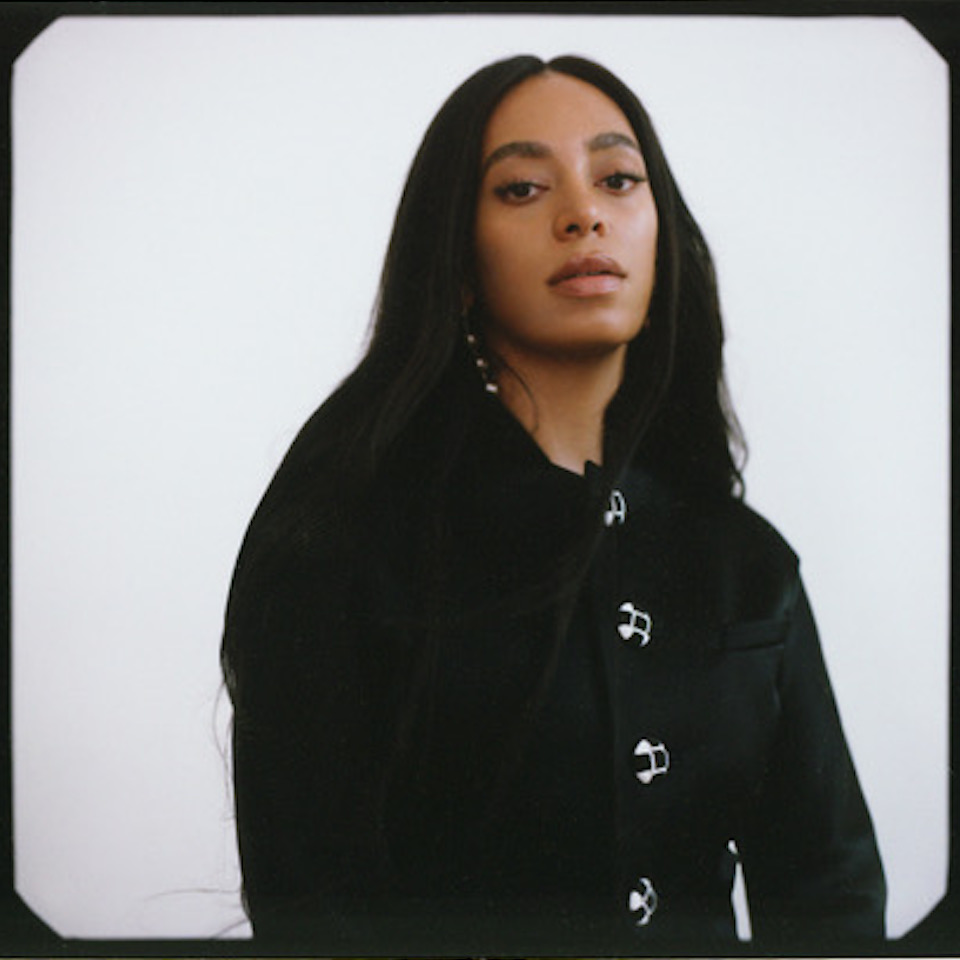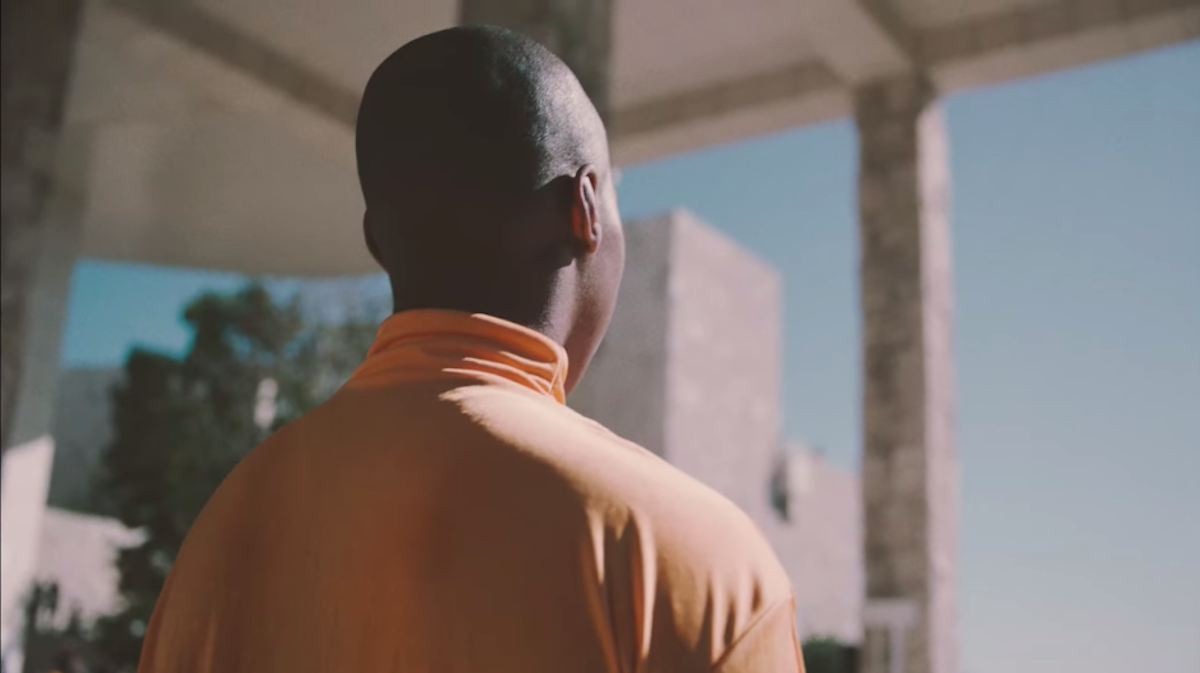
Solange on creating a source of community and connection with Bridge-s
Published on February 28, 2020
Solange Knowles is a GRAMMY-award winning singer, songwriter, record producer, and visual artist.
She’s conducted performance art shows across the globe at iconic venues, including the Guggenheim Museum in New York City (2017), the Chinati Foundation in Marfa, Texas (2017), and the Elbphilharmonie Hamburg, in Germany (2019). She has exhibited video art installations at London’s Tate Modern and premiered an interdisciplinary video and dance performance piece, Metatronia, which featured Metatron’s Cube, 2018; a sculpture conceptualized and created by Solange, at the Hammer Museum in Los Angeles.
Her work addresses a wide range of themes, and Bridge-s—her curated, programmed, and creative-directed series of performances, films, and artist talks that premiered last November at Getty Center in partnership with Dropbox—explores themes of “transitions through time.”
Bridge-s encompasses work from Gerard & Kelly and a wide range of other artists from different concentrations. We asked how she stayed organized, focused and in sync with her collaborators.
"We really wanted to lean in as much as we could to the space, to the lines, and to the light that The Getty embraces so powerfully and make it our own."

You often speak about the importance of intention. What intention did you set for Bridge-s?
Accepting transition as a necessary part of life’s evolution no matter how uncomfortable, uncertain, or painful. This work is almost like creating a map or a constellation of the moments of solitude, reflection, grief, rage, grace, and then a surrender to let the foundation crumble so that it may be re-built. Through the sonic language, the language of movement, the narratives of many of the films, these conversations come to life and really invite the audience to reflect on their own transitions of life and to ask themselves where they are in that journey.
The weekend includes several different mediums, including dance, music, and film. How did you source works that resonated with you?
It really was about creating a source of community and connection through multiple mediums that all centered on transition. When I think about films like Julie Dash’s Diary of an African Nun, and the transition the woman is carried through in her decision to devote her life to Christ, or the transition of a young Zambian girl's odyssey to the moon, much of it rests on our ability or inability to face the pressures of what acceptance in those transitions look like. When I think about Kodwo Eshun's lecture on Afrofuturism, I think about how much that conversation and critique has transitioned us into understanding ourselves better.
Jenn Nkiru's Black to Techno speaks to the transition of the origin of techno music from black people in Detroit to this global expression in Germany. They are all very different expressions of the same conversation, but a film might spark a different reaction and response than a movement might...a different debate amongst friends on the way home. So for me it’s about activating the same question in a multitude of ways that really promote community energy. I recognize that collaborators might be able to inspire a different ally into the same world and how necessary that is.

How did this work compare to other projects in the past? Did you see parallels with your work for Saint Heron?
This work evolved very differently as removing myself as subject and into director allows for much more expansiveness within the narrative. I’m able to make the work wider and open up more space through individualized energies within the performance. Also, the work is so specific to the architecture to creating new landscapes. We really wanted to lean in as much as we could to the space, to the lines, and to the light that The Getty embraces so powerfully and make it our own. It’s about creating strong work that conveys exactly what it is we’d like to say and then inviting the space to partake in the narrative. The way we invited people to experience the performance really speaks to what is at the core of my work with Saint Heron. That the work is nothing without the community it intends to speak to and through. There’s no place too sacred to experience the urgency of that!
What was your creative process for the Bridge-s?
Well, Bridge-s really started with the music. I really wanted to create a sonic landscape in which we were able to express all of the phases of transition, the fluidity, the tension, the metamorphosis....
I had been playing with these ideas for a couple of months in voice notes on my phone and tried to create a sort of methodology for teaching it since a lot of it was very numerical and on its own kind of grid system. But I would say the first month was just maximizing the arrangements as much as I could in scale and intensity and length and then honing in on the key moments that really expressed and punched in on communicating those feelings. From there, I would often loop those moments in different time signatures and stretch them in repetition until they became almost apart of us. That’s what repetition has done for me, it’s made me a believer in ideas and mantras by enforcing these beliefs into who I am.

This was really so paralleled to Gerard & Kelly’s work which often plays with this idea of a clock system and uses numerology and repetition to trace intimacy in spaces. So this made it really easy for our systems to link up and we really embraced using it in the work out loud.
What tools are you using for mindfulness?
Breathing! Therapy, reading, writing. Trying to really strengthen my other senses more than my rampant brain, because this head of mine gets way ahead of itself some time. It can be so unkind to me. Trying to take the time to recognize when I eat fruit, where it may have come from and appreciating the hands that picked it...I've had great guides in helping me practice this because by nature I am not wired this way. In the past I’ve used my movement through dance, or musical meditations to help me practice this and recently those tools said nah this is not enough. So mindfulness is becoming a necessary part of my evolution.
Dropbox recently announced our smart workspace, a place to bring together all your content and apps in one place to reduce distractions and help you focus. Which apps do you rely on every day? How would you envision building a smart workspace for creative collaborators?
So much of my work is done with team members and collaborators from all over the world and centering in one space to share and organize ideas, textures, schedules, budgets and any other progressions within the project is so absolutely vital to the process. It would only make sense that the tools we have feel like their own digital universes that reflect the universes and experiences we are trying to create where we can express the sense of community and connectivity that we are trying to build out in the world.
I use a lot of voice notes, and photo booth videos, and photo references from my phone that I really rely on to send to collaborators to build the landscape as I develop it in real time. I also use a few weather apps to track light, photo resizing apps, apps to organize my MP3’s so that I can access them from recording studio straight to phone. I also like to be attentive about the environments I work and dwell in for projects and so there’s a few hotel apps in there as well. A lot of these projects move at rapid speed and having one place to organize all of these resources for everybody to be able to access quickly and efficiently, but having this space speak to the way that we want to engage as a team, as a community, and out in the world.
To learn more about this beautiful event that was produced using Dropbox Paper, download this zine.


